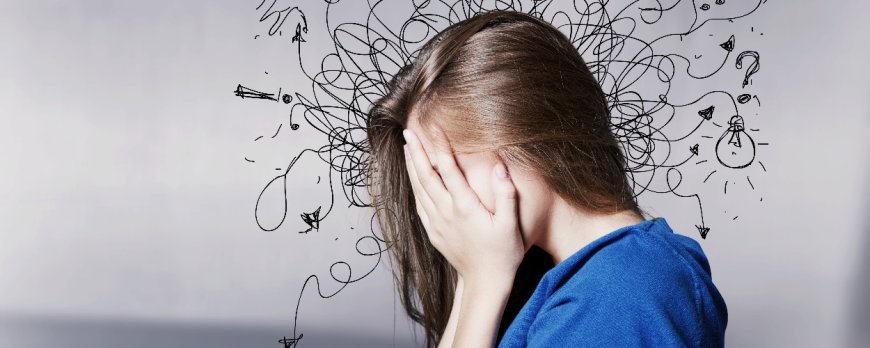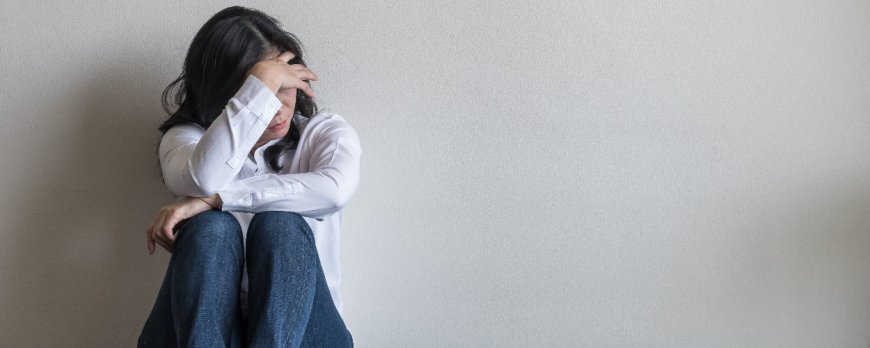What is the 5 4 3 2 1 method for anxiety?
Explore "What is the 5 4 3 2 1 method for anxiety?" in-depth- a proven technique practiced worldwide for alleviating anxiety and stress symptoms.

What is the 5 4 3 2 1 Method for Anxiety?
The 5 4 3 2 1 method for anxiety is a proven technique practiced worldwide for alleviating anxiety and stress symptoms. It is a grounding exercise that helps individuals to shift their focus from anxious thoughts to the present moment. By engaging with the senses, this technique aims to calm the nervous system and decrease the "fight or flight" response that contributes to anxiety.
Key Takeaways:
- The 5 4 3 2 1 method is a grounding exercise for anxiety relief and stress management.
- It involves engaging with the senses to bring attention to the present moment.
- The technique is grounded in mindfulness and can be used as an imagery technique.
- It can be beneficial for managing anxiety, but professional help is essential for chronic anxiety.
- The 5 4 3 2 1 method is incorporated into cognitive behavioral therapy (CBT) for managing stress and anxiety.
Understanding the 5 4 3 2 1 Method
The 5 4 3 2 1 method is a grounding exercise that helps to alleviate feelings of anxiety or panic by focusing on the present moment. This anxiety coping mechanism and stress management technique involves engaging with your senses to shift your attention away from anxious thoughts and into the present. By acknowledging specific things you see, touch, hear, smell, and taste in your immediate surroundings, you can anchor yourself in the present and reduce anxiety.
This method is rooted in mindfulness, which is the practice of deliberately bringing your attention to the present moment without judgment. By immersing yourself in your senses, you redirect your focus from the causes of anxiety to the sensations of the present. This helps to calm the nervous system and decrease the "fight or flight" response associated with anxiety.
When practicing the 5 4 3 2 1 method, you can start by noticing five things you see, four things you touch, three things you hear, two things you smell, and one thing you taste. This structured approach can help you fully engage with your senses and ground yourself in the present moment. It is important to note that while this technique can be beneficial for managing anxiety, it is not a substitute for professional help. If you struggle with anxiety on a regular basis, seeking professional guidance is crucial for long-term management.

Engaging Your Senses
By engaging with your senses, the 5 4 3 2 1 method helps to bring your attention away from anxious thoughts and into the present. This anxiety management strategy encourages you to focus on specific things you see, touch, hear, smell, and taste in your immediate surroundings. By redirecting your attention to these sensory experiences, you can effectively shift away from the causes of anxiety and decrease the "fight or flight" response that contributes to anxious feelings.
When practicing the 5 4 3 2 1 method, start by acknowledging five things you see around you. Take a moment to observe the colors, shapes, and details of these objects. Then, move on to four things you can touch, paying attention to textures and temperatures. Next, identify three things you can hear, such as the sound of birds singing or the hum of a fan. After that, focus on two things you can smell, whether it's the freshness of the air or the aroma of your surroundings. Finally, savor the taste of one thing, whether it's a sip of water or a piece of fruit.
Engaging your senses in this way can help anchor you in the present moment, grounding you and providing a sense of calm. This anxiety self-help method is a helpful tool for managing anxiety in the moment, but it's important to note that if you struggle with anxiety on a regular basis, seeking professional help is crucial for long-term management. The 5 4 3 2 1 method is often used in cognitive behavioral therapy (CBT), which teaches individuals behavioral skills for managing stress and anxiety.
Mindfulness and Imagery
The 5 4 3 2 1 method incorporates mindfulness and imagery techniques to calm the nervous system and shift focus from anxiety-inducing thoughts. Mindfulness, a practice rooted in ancient traditions, involves paying attention to the present moment without judgment. By intentionally directing our awareness to the sensations we experience in the here and now, we can interrupt the cycle of anxious thoughts and bring a sense of calm.
When practicing the 5 4 3 2 1 method, mindfulness encourages us to engage all of our senses. We start by acknowledging five things we see around us, noticing their colors, shapes, and textures. Next, we shift our attention to four things we can touch, paying attention to the way they feel against our skin or in our hands. Then, we focus on three things we can hear, tuning in to the sounds that surround us. After that, we notice two things we can smell, inhaling deeply and taking note of the aromas in our environment. Finally, we identify one thing we can taste, savoring the flavor and bringing our attention fully to the present moment.
Imagery techniques complement mindfulness in the 5 4 3 2 1 method. By visualizing calming and pleasant images, we can further enhance the relaxation response and redirect our focus away from negative thoughts. This can be done by imagining serene landscapes, favorite memories, or any imagery that brings a sense of peace and tranquility. Engaging in vivid mental imagery helps to create a mental escape, allowing our minds to find soothing and positive associations to combat anxiety.
Incorporating mindfulness and imagery into the 5 4 3 2 1 method provides a powerful combination of techniques to effectively manage anxiety. By grounding ourselves in the present moment and utilizing our senses, we can reduce the impact of anxious thoughts and bring about a greater sense of calm and relaxation.

Benefits of the 5 4 3 2 1 Method
The 5 4 3 2 1 method can be beneficial for managing anxiety and reducing stress symptoms. By engaging your senses and focusing on the present moment, this anxiety relief technique helps shift your attention away from anxious thoughts and into the immediate surroundings. Here are some key benefits of practicing the 5 4 3 2 1 method:
- Immediate grounding: When anxiety strikes, it's common to feel disconnected from the present moment. The 5 4 3 2 1 method provides a simple yet effective way to ground yourself, bringing your attention back to the here and now.
- Anxiety reduction: By redirecting your focus from the causes of anxiety to your present sensations, this stress reduction exercise can help decrease the intensity of anxiety symptoms. It encourages a shift from the "fight or flight" response, promoting a sense of calm and relaxation.
- Mindfulness practice: The 5 4 3 2 1 method is rooted in mindfulness, a practice that involves nonjudgmental awareness of the present moment. Regular practice of this technique can enhance your overall mindfulness skills, which have been shown to reduce anxiety and improve mental well-being.
If you're struggling with anxiety on a regular basis, it's important to seek professional help. While the 5 4 3 2 1 method can provide temporary relief and be a useful self-help technique, a qualified therapist or counselor can offer guidance and support for long-term management of anxiety.
Incorporating the 5 4 3 2 1 method into your daily routine can be an effective anxiety management strategy. Consistent practice can help reduce stress and anxiety levels, allowing for greater overall well-being. Remember, everyone's experience with anxiety is unique, so it's essential to find what works best for you in managing your symptoms.
Using the 5 4 3 2 1 Method in Cognitive Behavioral Therapy (CBT)
The 5 4 3 2 1 method is commonly used as a technique in cognitive behavioral therapy (CBT), which focuses on teaching individuals behavioral skills for managing stress and anxiety. This method is integrated into CBT sessions to help individuals ground themselves in the present moment and reduce anxiety symptoms. By incorporating the 5 4 3 2 1 technique into CBT, therapists aim to provide their clients with practical tools to cope with anxiety effectively.
In CBT, the 5 4 3 2 1 method serves as a helpful strategy for interrupting anxious thoughts and shifting attention to the immediate sensory experience. Therapists guide individuals through the steps of the technique, encouraging them to engage with their senses and focus on specific things they see, touch, hear, smell, and taste. By redirecting attention to the present sensations, the technique helps to calm the nervous system and reduce the "fight or flight" response associated with anxiety.
During CBT sessions, therapists may also use the 5 4 3 2 1 method as a starting point for exploring underlying thought patterns and beliefs that contribute to anxiety. By combining the technique with cognitive restructuring exercises, individuals are guided to challenge and reframe negative thoughts, thus empowering them to develop more adaptive responses to stressors and anxiety-provoking situations.
Overall, the incorporation of the 5 4 3 2 1 method into CBT provides individuals with practical skills and strategies to manage stress and anxiety. By combining sensory grounding techniques with cognitive restructuring exercises, CBT helps individuals develop a comprehensive toolbox for navigating anxiety and improving their overall well-being.
Seeking Professional Help for Chronic Anxiety
If you struggle with anxiety on a regular basis, it is important to seek professional help alongside using the 5 4 3 2 1 method as a self-help technique. While the 5 4 3 2 1 method can be a useful tool for managing anxiety, chronic anxiety requires comprehensive and specialized treatment.
Professional help can provide you with the guidance and support necessary to address the root causes of your anxiety and develop personalized strategies for managing it. A qualified therapist or counselor can work with you to identify the specific triggers of your anxiety, explore deep-seated patterns of thought and behavior, and develop effective coping mechanisms. They can also help you navigate through any underlying mental health issues that may be contributing to your anxiety.
By seeking professional help, you can gain access to evidence-based treatments, such as cognitive-behavioral therapy (CBT), which has been proven to be effective in managing anxiety. CBT teaches individuals behavioral skills that can be used in conjunction with the 5 4 3 2 1 method, providing you with a comprehensive toolkit for managing stress and anxiety in your daily life.
If you find that your anxiety is interfering with your ability to function on a daily basis, impacting your relationships, or causing significant distress, don't hesitate to reach out to a mental health professional. They can help you develop a personalized treatment plan and provide ongoing support as you navigate your journey towards better mental health.
Incorporating the 5 4 3 2 1 Method into Daily Routine
By incorporating the 5 4 3 2 1 method into your daily routine, you can establish an effective anxiety management strategy and experience stress reduction. This simple yet powerful technique can be practiced anytime, anywhere, making it convenient to integrate into your daily life.
To begin, find a quiet and comfortable space where you can focus without distractions. Take a few deep breaths to center yourself and bring your attention to the present moment. Now, engage your senses one by one, using the 5 4 3 2 1 method.
- See: Look around and identify five things you can see. Pay attention to their colors, shapes, and details. Allow yourself to become fully present in the visual experience.
- Touch: Shift your attention to your sense of touch. Notice four things you can touch, whether it's the texture of an object, the warmth of your own hands, or the sensation of a gentle breeze on your skin.
- Hear: Take a moment to listen and identify three sounds you can hear. It can be the chirping of birds, the rustling of leaves, or even the sound of your own breath. Allow the sounds to wash over you, grounding you in the present.
Continue this process by focusing on your sense of smell and taste, identifying two things you can smell and one thing you can taste. By engaging with your senses in this way, you redirect your focus away from anxious thoughts and into the immediate sensations of the present moment.
Consistency is key when incorporating the 5 4 3 2 1 method into your daily routine. Set aside a few minutes each day to practice this technique, whether it's in the morning to start your day on a calm note or in the evening to unwind before bed. Over time, you'll notice a reduction in anxiety and an increased ability to manage stress effectively.

Real Life Success Stories with the 5 4 3 2 1 Method
Numerous individuals have reported success in alleviating anxiety and managing stress through the consistent practice of the 5 4 3 2 1 method. This anxiety relief technique and stress management technique has proven to be an effective anxiety coping mechanism for people from all walks of life.
One individual, Sarah, shared her experience with the 5 4 3 2 1 method and how it has transformed her life. Sarah used to struggle with chronic anxiety, feeling overwhelmed by racing thoughts and constant worry. However, after incorporating the 5 4 3 2 1 method into her daily routine, she found that it provided her with a sense of calm and control over her anxiety. By engaging her senses and focusing on the present moment, she was able to shift her attention away from anxious thoughts and find relief from her anxiety symptoms.
Another success story comes from Jack, who used the 5 4 3 2 1 method as part of his cognitive behavioral therapy journey. Jack had been working with a therapist to manage his anxiety, and the 5 4 3 2 1 method was introduced as a tool to help him cope with stress and anxiety in his everyday life. By practicing the method regularly, Jack noticed a significant reduction in his anxiety levels and a newfound ability to stay grounded in the present moment. He credits the 5 4 3 2 1 method for helping him gain a sense of control over his anxiety and regain his quality of life.
Benefits of the 5 4 3 2 1 Method
- Reduction in anxiety symptoms
- Increased ability to manage stress
- Improved focus on the present moment
- Enhanced sense of control over anxiety
- Promotion of relaxation and calmness
The 5 4 3 2 1 method has shown incredible potential in helping individuals find relief from anxiety and manage stress effectively. By incorporating this anxiety relief technique into daily routines, practicing mindfulness, and engaging the senses, it is possible to experience a significant decrease in anxiety symptoms and an overall improvement in mental well-being. While it's essential to seek professional help for chronic anxiety, the 5 4 3 2 1 method can be a valuable self-help tool to complement therapy and provide individuals with practical strategies for anxiety management.
Conclusion
The 5 4 3 2 1 method is a widely practiced anxiety relief technique and mental health strategy that serves as an effective anxiety coping mechanism and stress management technique. This grounding exercise helps alleviate feelings of anxiety or panic by focusing on the present moment. By engaging with your senses and acknowledging specific things you see, touch, hear, smell, and taste in your immediate surroundings, it brings your attention away from anxious thoughts and into the present.
This technique can be highly beneficial for managing anxiety, as it is grounded in mindfulness and can also be used as an imagery technique. By calming the nervous system and shifting your focus from the causes of anxiety to the present sensations, the 5 4 3 2 1 method helps decrease the "fight or flight" response that contributes to anxiety.
It's important to note that while the 5 4 3 2 1 method can be a valuable self-help technique, seeking professional help is crucial if you struggle with anxiety on a regular basis. Professional guidance can provide a comprehensive approach for long-term management of anxiety, combining the 5 4 3 2 1 method with other evidence-based therapies.
The 5 4 3 2 1 method is frequently incorporated into cognitive behavioral therapy (CBT), which teaches individuals behavioral skills for effectively coping with stress and anxiety. By incorporating this technique into your daily routine, you can enhance its effectiveness as an anxiety management strategy and stress reduction exercise. Consistent practice can help reduce stress and anxiety levels, promoting overall mental well-being.


































































































































